
หน้าหลัก | สุขภาพดี | สุภาพสตรี | การแปลผลเลือด | โรคต่างๆ | วัคซีน | อาหารเพื่อสุขภาพ
Low Sodium Foods for People with High Blood Pressure (Hypertension)

Sodium is an essential nutrient required by the body for maintaining proper blood pressure and for providing channels of nerve signaling in the body. Sodium is a major component of table salt (Sodium Chloride) and in today's modern diet it is often easy to consume too much sodium since salt is often added in large quantities to a variety of foods, and used in food preservation.
Over-consumption of sodium leads to high blood pressure (hypertension), which later leads to heart disease and stroke. As such, it is wise to regulate the amount of sodium you eat, and if you have high blood pressure to restrict your consumption of sodium, while boosting your consumption of potassium.
Fortunately, almost all foods are naturally low in sodium and it is easy to avoid consuming sodium if you stick to eating whole unprocessed foods without adding any salt or sauces. So a low sodium diet could be seen as more of an exercise in avoiding high sodium foods, than eating low sodium foods. Healthy low sodium foods include vegetables, fruits, beans, grains, legumes, nuts, meats, oils, and fish. Be sure foods are not canned, or otherwise prepared with salt, or sauces that contain salt. Below is an overview of the top 10 foods lowest in sodium for your blood pressure diet.
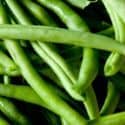
1.3mg (0% DV) in 1 cup (125g)
1mg (0% DV) in 100g
Complete nutrition facts.
Ranking of low sodium vegetables.
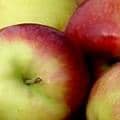
0mg (0% DV) in 1 cup slices (110g)
0mg (0% DV) in 1 medium (3" dia) (161g)
0mg (0% DV) in 100g
Complete nutrition facts.
Ranking of low sodium fruits.
 #3: Beans and Legumes (Navy Beans, Lentils)
#3: Beans and Legumes (Navy Beans, Lentils)
0mg (0% DV) in 1 cup (182g)
0mg (0% DV) in 100g
Complete nutrition facts.
Ranking of low sodium beans and legumes.
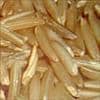 #4: Whole Grains (Brown Rice, Oatmeal, Quinoa)
#4: Whole Grains (Brown Rice, Oatmeal, Quinoa)
2mg (0% DV) in 1 cup (195g)
1mg (0% DV) in 100g
Complete nutrition facts.
Ranking of low sodium grains.Check labels of whole wheat breads and pastas as they can often contain a lot of sodium.
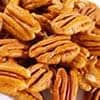 #5: Nuts (Pecans)
#5: Nuts (Pecans)
0mg (0% DV) in 1 oz (19 halves) (28g)
0mg (0% DV) in 1 cup, halves (99g)
0mg (0% DV) in 100g
Complete nutrition facts.
Ranking of low sodium nuts.
 #6: Fats and Oils (Olive Oil)
#6: Fats and Oils (Olive Oil)
4.3mg (0% DV) in 1 cup (216g)
0.1mg (0% DV) in 1 tsp (5g)
2mg (0% DV) in 100g
Complete nutrition facts.
Ranking of low sodium fats and oils.
 #7: Herbs (Basil)
#7: Herbs (Basil)
0.2mg (0% DV) in 1/4 cup leaves, whole (6g)
0.2mg (0% DV) in 2 tbsp, chopped (5g)
4mg (0% DV) in 100g
Complete nutrition facts.
Ranking of low sodium spices and herbs.
 #8: Spices (Ground Cinnamon)
#8: Spices (Ground Cinnamon)
0.8mg (0% DV) in 1 tbsp (8g)
0.3mg (0% DV) in 1 tsp (3g)
10mg (0% DV) in 100g
Complete nutrition facts.
Ranking of low sodium spices and herbs. Check labels, even dred red chillies can be high in sodium.
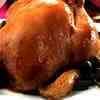 #9: Meats (Chicken, Pork*, Beef*)
#9: Meats (Chicken, Pork*, Beef*)
40mg (2% DV) in 3 oz (85g)
85.1mg (4% DV) in 1 piece (181g)
47mg (2% DV) in 100g
Complete nutrition facts.
Ranking of low sodium poultry (chicken). *Includes only meat prepared without salt, and excludes most hams, sausages, bacon, etc..)
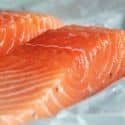 #10: Fish (Salmon, Trout)
#10: Fish (Salmon, Trout)
47.6mg (2% DV) in 3 oz (85g)
86.2mg (3% DV) in 1/2 fillet (154g)
56mg (2% DV) in 100g
Complete nutrition facts.
Ranking of low sodium fish and shell fish. Avoid fish from the sea, and shell fish like mussels and oysters.
